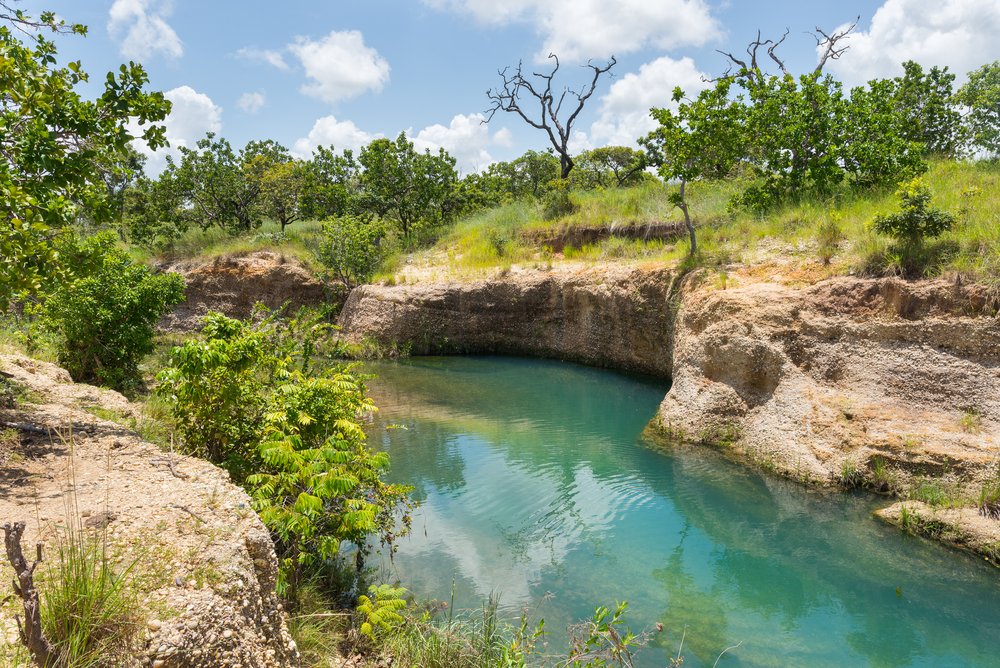Laguna de Tacarigua Overview
Laguna de Tacarigua National Park, known locally as Parque Nacional Laguna de Tacarigua, is a protected area situated in the eastern part of Venezuela, within the state of Miranda.
Covering approximately 156 square miles (405 square kilometers), the park encompasses a dynamic mix of coastal landscapes, freshwater and saltwater ecosystems, and tropical forests. Established in 1974, it was created to protect the region’s delicate lagoon system, which serves as a vital habitat for wildlife and a crucial ecological buffer between the Caribbean Sea and the inland environment.
The terrain of Laguna de Tacarigua National Park is dominated by an extensive lagoon system that stretches for nearly 19 miles (30 kilometers) along the Venezuelan coastline. This brackish water body is separated from the Caribbean Sea by a narrow barrier beach, which plays a vital role in maintaining the lagoon’s balance of freshwater and saltwater.
The landscape features mangrove forests, sandy beaches, mudflats, and marshlands, which together create a complex mosaic of habitats. The mangrove swamps, primarily consisting of red mangrove (Rhizophora mangle), white mangrove (Laguncularia racemosa), and black mangrove (Avicennia germinans), provide critical breeding and feeding grounds for numerous aquatic species.
Inland, the terrain transitions into patches of tropical dry forest, where species such as ceibas, mahogany, and cují trees thrive, adding diversity to the park’s vegetation.
The park is a haven for birdlife, attracting birdwatchers from around the world. Among its most iconic residents are scarlet ibises, pink flamingos, black skimmers, great egrets, and osprey. The lagoon serves as an essential stopover site for migratory birds, making it a hotspot for avian diversity.
The park is also home to numerous species of herons, pelicans, and shorebirds, which can be seen feeding along the mudflats and shallow waters. In addition to its remarkable bird population, Laguna de Tacarigua shelters mammals such as ocelots, capybaras, and raccoons, along with reptiles like American crocodiles and green iguanas.
The West Indian manatee, though rare, has been occasionally spotted in the park’s waters, highlighting its ecological importance as a refuge for endangered species.
One of the most popular features of the park is the stunning barrier beach, where visitors can enjoy unspoiled sandy shores and panoramic views of the Caribbean Sea. The park is also known for its tranquil waterways, ideal for kayaking, canoeing, and birdwatching excursions.
Many visitors explore the lagoon by boat tours, allowing them to glide through the mangrove channels and observe the thriving wildlife up close. The park’s remoteness offers an excellent setting for eco-tourism, photography, and nature hikes, providing a peaceful alternative to Venezuela’s more developed coastal destinations.
Laguna de Tacarigua National Park faces conservation challenges, including coastal erosion, pollution, illegal fishing, and habitat degradation due to human activity. However, efforts have been made to enhance environmental awareness, promote sustainable tourism, and enforce stricter protections for wildlife.
Conservation initiatives include mangrove reforestation programs and monitoring of endangered species, ensuring that the park remains a sanctuary for its unique ecosystem. While the balance between ecological preservation and human activity remains a challenge, ongoing management efforts by park authorities and local conservation groups continue to make significant strides in protecting this vital coastal habitat for future generations.














































































